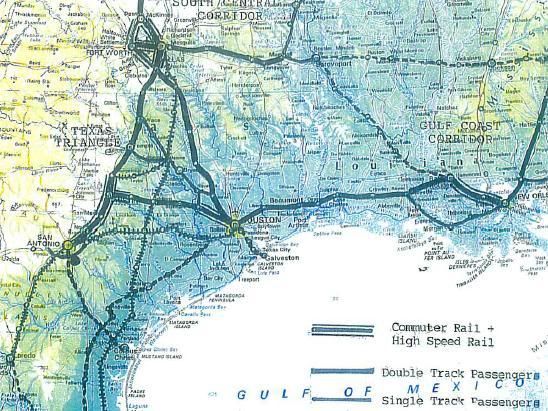Burning the Midnight Oil for Progressive Populism
 First off, the thing to do with the BS about gutting the safety net on the excuse that the Take Everything Away Party wants to kill it is to take the idea of gutting the safety programs behind the farmhouse to the mint bed and apply a sharp ax.
First off, the thing to do with the BS about gutting the safety net on the excuse that the Take Everything Away Party wants to kill it is to take the idea of gutting the safety programs behind the farmhouse to the mint bed and apply a sharp ax.
How to do that, I don’t know.
But if it can be done, then there’s still the question of whether and how to sell the “Jobs Policy”
In a Nutshell
Without the specifics, the broad outline (pdf) of the policy is about $240b in tax cuts and $200b in spending. Of the $200b in spending, about $50b is unemployment insurance extension, which is maintaining what we presently have, and $35b is offsetting state and local cuts in teacher and first responder employment, so about $115b in new spending stimulus.
Economically, the alternative is not status quo, the alternative is ongoing cuts, so you could argue that its a useful $200b increase in spending in economic terms ~ but in political terms, “it could have been worse” is a sharp an argument as a plastic knife, so I’ll count it as $115b in stimulus.
Can that work? Well, it depends on what you mean by work. To the extent that the $115b in spending can be done over the next year, it is more “Stimulus” than we had last year, and almost as much as we had in the Fiscal Year from October 2009 to September 2010 ~ when unemployment did, in fact, noticably decline.
So in terms of “will unemployment noticeably decline?” as working (as low a bar as that may be), yes, it’s likely to work.
Over the long haul, if that worth the promised future spending cuts over the next decade to “pay for” the payroll tax cuts that will have such weak effect? …
… well, that’s the question.
In policy terms, we need employment now. When we set the damage to be done in the future against whatever fights we lose in the future based on the “baseline” including absurd cuts …. against the damage that will be done by a second recession if we allow the economy to continue heading into a second recession … the recession is more total damage.
And in political terms, I was here in Ohio when Governor Strickland was facing re-election against a heavily corporate backed and heavily attacked for his corporate background rival, and the heavy attacks on his corporate background had a serious impact … but Kasich still won by 2%. If the economy slips into a recession next year, the Citizen’s United money is going to get that to use to continue attacking the half measures taken in 2009, and could quite conceivably lay the foundation for policies that extend the current Depression into something to rival the Great Depression.
Fighting to preserve the safety net is complex enough: I argue for simplifying everything else.
But HOW to support the Jobs Bill
The problem is, based on past performance, we would expect the Obama administration to cave on the useful parts of the Job Bill and accept a “compromise” consisting of only the useless parts. After all, the Republicans would happily accept the useless parts, as advancing their interests while still tilting the playing field to their advantage as they choose between nominating a bad candidate or several worse ones.
So support needs to be both simple, and to be support for the spending plus tax cuts as a package deal.
I reckon the message is:
The real job creators are customers. All the tax cuts in the world are useless unless businesses have orders to fill. Pulling out the spending makes the tax cuts useless, so no spending, no jobs. And no jobs, no deal.
No spending, no jobs. And no jobs, no deal.
 I saw this story a couple of weeks ago, but between the happenings in California and some unanswered questions I had, I haven’t mentioned it yet. Florida East Coast Industries plans Miami-Orlando passenger service by 2014:
I saw this story a couple of weeks ago, but between the happenings in California and some unanswered questions I had, I haven’t mentioned it yet. Florida East Coast Industries plans Miami-Orlando passenger service by 2014: 
 As I mentioned in last week’s Sunday Train, the California HSR Authority came out with a revised draft Business Plan.
As I mentioned in last week’s Sunday Train, the California HSR Authority came out with a revised draft Business Plan. The headlines out of California indicate that there has been a substantial shift in terms of the California HSR system. In particular, it seems that Gov. Brown has waded into the fray and is reframing the issue from the Only-An-Infrastructure-Geek-Could-Love frame of the Initial Construction Segment and the mythical “Train to Nowhere”, to the “when do I get to ride it?” frame of the Initial Operating Service.
The headlines out of California indicate that there has been a substantial shift in terms of the California HSR system. In particular, it seems that Gov. Brown has waded into the fray and is reframing the issue from the Only-An-Infrastructure-Geek-Could-Love frame of the Initial Construction Segment and the mythical “Train to Nowhere”, to the “when do I get to ride it?” frame of the Initial Operating Service. Nearly a month ago, Yonah Freemark had a post at
Nearly a month ago, Yonah Freemark had a post at  Yeah, OK, its not Sunday, but I got called on Saturday morning after a Friday night class to substitute for a colleague, and that threw me off completely. Fortunately for the Sunday Train, I am massively underemployed, so there is Monday afternoon available to finish composing what I been thinking about this week.
Yeah, OK, its not Sunday, but I got called on Saturday morning after a Friday night class to substitute for a colleague, and that threw me off completely. Fortunately for the Sunday Train, I am massively underemployed, so there is Monday afternoon available to finish composing what I been thinking about this week. First off, the thing to do with the BS about gutting the safety net on the excuse that the Take Everything Away Party wants to kill it is to take the idea of gutting the safety programs behind the farmhouse to the mint bed and apply a sharp ax.
First off, the thing to do with the BS about gutting the safety net on the excuse that the Take Everything Away Party wants to kill it is to take the idea of gutting the safety programs behind the farmhouse to the mint bed and apply a sharp ax. There has recently been a flurry of activism regarding regulatory approval of the “XL Pipeline” in support of bitumen production from Canadian Tar Sands. This is an issue that has attracted substantial attention from a variety of bloggers ~ the
There has recently been a flurry of activism regarding regulatory approval of the “XL Pipeline” in support of bitumen production from Canadian Tar Sands. This is an issue that has attracted substantial attention from a variety of bloggers ~ the  Yonah Freemark at his site
Yonah Freemark at his site  Back in the 90’s, Texas tried to get an Express HSR system off the ground (that is, a bullet train system somewhere in the 125mph to 220mph range) with the “Texas Triangle” project.
Back in the 90’s, Texas tried to get an Express HSR system off the ground (that is, a bullet train system somewhere in the 125mph to 220mph range) with the “Texas Triangle” project.
Recent Comments